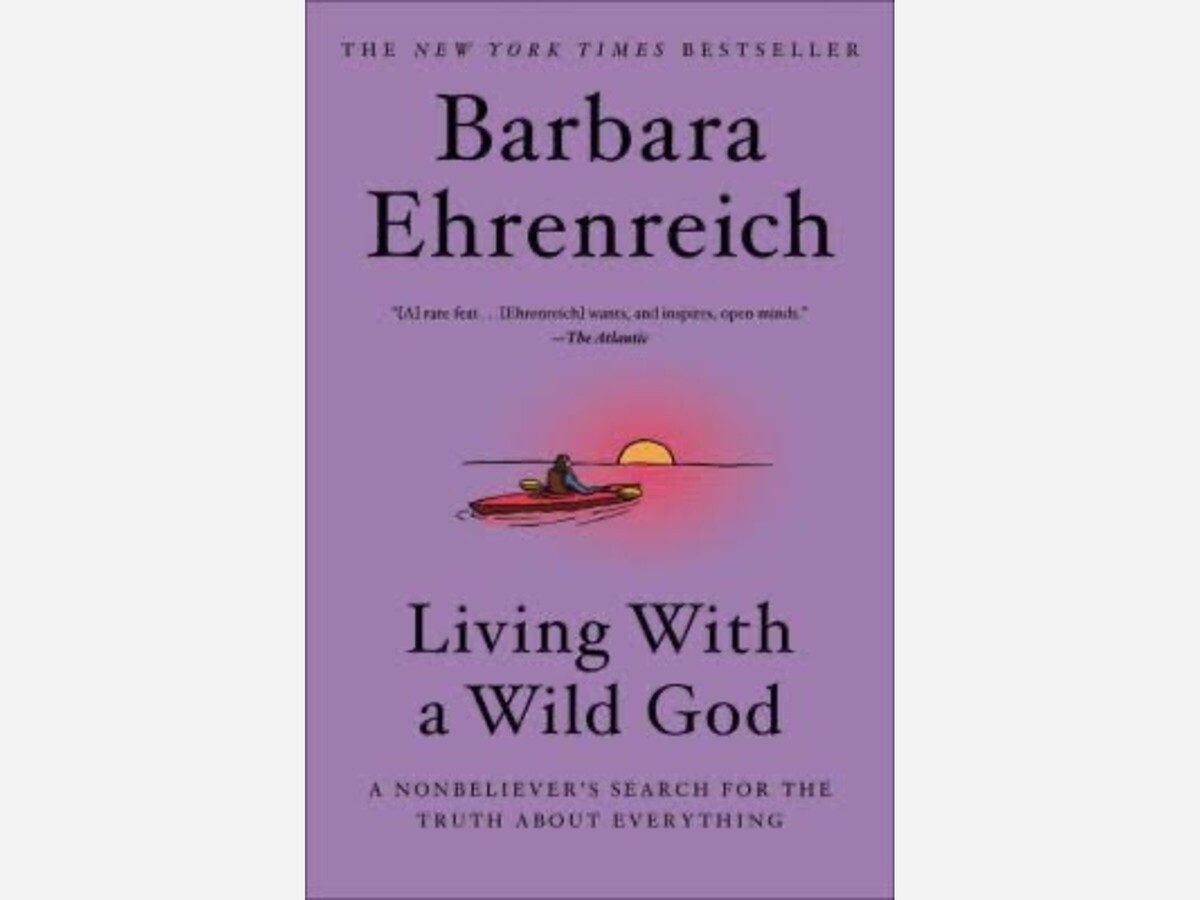Image

by Craig Bennett*
I discovered an account of “religious evolution” that roughly paralleled my own in Barbara Ehrenreich’s Living with a Wild God. It wasn’t an exact parallel, of course; but in its broader outlines, it was one to which I felt I could relate. Her early religious influences included a father who told a tale of his own grandmother, who lay dying as a result of giving birth. When a crucifix was placed upon her breast by a priest who had been summoned to administer last rites, she lifted the crucifix off her chest and threw it across the room with the last bit of strength she was able to gather.
This accounted in large part for her father’s antagonistic attitude toward religion, and she absorbed that attitude as she grew up. Her family were non-believers, and religion was regarded as potentially pernicious mythology to be kept at arm’s length. But what this meant, she later discovered, was that when she began to ponder the sort of metaphysical questions that sooner or later occur to people of her level of intellectual curiosity as they mature, there were no ready answers waiting for her. By the time she was fourteen, she realized that she was going to have to think her own way to some answers.
In the process of a major relocation as an adult, Ehrenreich discovered the journal she had kept during her teen years; and this eventually resulted in her book Living with a Wild God. Unlike her, I had not kept a journal through most of my adolescence. But I could remember well the questions regarding religion—Protestant Christianity, specifically—that set me to thinking and wondering when I was about the same age as Ehrenreich when she began the same process.
In that book, Ehrenreich reveals that she’d always been fascinated by this country’s “ambient Christianity” as a sort of “prefab metaphysics” that demanded nothing except uncritical acceptance. Like Ehrenreich, I had resisted off-the-rack, ready-to-wear religion essentially since late childhood as a simple matter of intellectual policy. I resisted any explanation for the otherwise unexplainable that didn’t conform to what I knew was possible in the real world. Anything else seemed to me like nothing more than speculation, and I assumed that my own speculation was about as good as anyone else’s. I knew by this point in my life that I’d always had a fairly broad streak of independence, and there was probably no area where that independence was more important to me than in what I thought. I was well aware that I didn’t know everything; but when it came to things that no one really knew for certain, why should I automatically accept someone else’s theory in lieu of my own? After all, if nobody knew the answer for certain at present, it may eventually turn out that I was right to begin with.
The thing that pleasantly surprised me about her experiences, however, involved a rather early encounter she had with nature. Her family had decided to go to a horse show one week-end. Feeling a little bored, she had wandered off and wound up leaning on a fence looking somewhat wistfully at the woods a short distance away. Suddenly, she recalled, for no apparent reason, “[s]omething peeled off the visible world, taking with it all meaning, inference, association, labels, and words.” Although she doesn’t explain it in these exact terms, I gathered that she had had a sort of revelation—even a spiritual revelation. Everything she knew and associated with trees was gone in an instant, and only the essence of the actual experience of trees remained. Somehow, quite without effort or forethought, her awareness had penetrated to the very core of tree-ness, and she understood it at a level to which neither her knowledge nor her awareness had penetrated before. She suddenly realized that when all the knowledge and experience of trees that might have been gained through science, literature, hearsay, or her own five physical senses was taken away, “there is still something left” [italics mine].
Ehrenreich’s experience finally articulated for me what my own spiritual quest has been since I was about the same age when she began her own: to discover, identify, and understand what that “something left” really is. Yet, the answer to that question may still be beyond our human ability to truly comprehend it.
It’s been the quest of essentially all of the world’s religions throughout time, each of which had what was probably a piece of the answer, but none of which could justifiably claim to hold the entire truth. It’s been the quest of many thinkers and writers well outside of the beliefs and structures of religion—any religion. And it remains the quest of many, many individuals who have spent the bulk of their lives quietly searching for additional pieces of the puzzle but do not yet have enough to fill out the whole picture. And for the time being, at least, it will be for each seeker to arrive at his or her own conclusion as to what that picture may reveal.
*Craig H. Bennett, author of Nights on the Mountain and More Things in Heaven and Earth